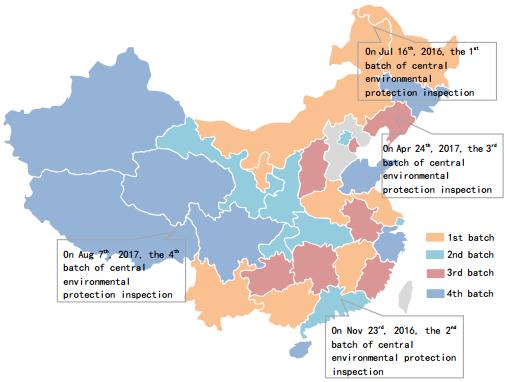Environmental protection inspection’s influences on methanol industry (Part 1)
July 13, 2018
Shandong (JLC), July 13, 2018–With the continuous improvement of people’s living quality, the inevitable social demand for good ecological environment has been rising. Simultaneously, in recent years, environmental protection inspections have been carried out around the country, with the inspection scope expanding, inspection details deepening, and rectifications and punishments reifying.
As the raw material accounting for the highest proportion in China’s energy structure, coal industry has features of high pollution, high energy consumption and high water consumption. Thus, coal chemical industry became the target of environmental protection inspections. Since coal is the main feedstock of methanol, methanol industry is also impacted.

For the influences on methanol industry, in 2015-2016, some China’s methanol production enterprises in Shaanxi and Yunnan shut down periodically due to the disordered discharge of waste water and waste gas. Besides, during the environmental protection inspection for some mines in Northwest China in 2017, operating status of some coal-to-methanol units was also suppressed. In addition, atmospheric problems caused by centralized winter heating in North China also directly restricted the operation of coking industry projects. According to JLC’s data, in
2017, the run rate of methanol industry in North China once declined to 40%. Some coking gas- based methanol projects cut loads periodically, and some units were forced to shut down.
Moreover, downstream industries including formaldehyde, plates, DMF and chloroacetic acid were also periodically affected by environmental protection inspection.
Appendix: List of historical environmental protection policies
June 2013, Ten Measures for the Prevention and Control of Air Pollution
April 2014, Environmental Law Amendment, deliberated by NPC Standing Committee
April 2015, Water pollution prevention action plan
January 1st, 2015, New Environmental Protection Law, known as the strictest environmental protection law in history
July 19th and October 21st, 2016, the first and second batch of central environmental protection inspection.
April 25th and August 14th, 2017, the third and fourth batch of central environmental protection inspection
On April 5th, 2017, the Ministry of Ecology and Environment carried out one-year air pollution control in Beijing, Tianjin, Hebei, and the surrounding transmission channel, namely “2+26” cities. This intensive inspection was the largest action in China’s history of environmental protection, which was directly organized by the state.
On January 1st, 2018, Environmental Protection Tax Law of PRC was officially implemented. The environmental protection tax started being levied, and the sewage charges were stagnated.
